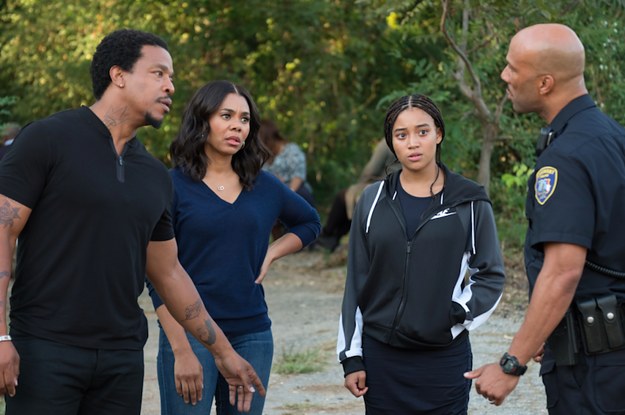
I mastered code-switching at a very young age-younger even than Starr. Like Starr (and Thomas), I grew up in a middle-ish class household, with a scholarship that allowed me to attend a private school far above my family’s means, though not above the means of my classmates’ (I’m talking the Tony Hawk-level skate ramps in their backyards kind of affluent). It’s a notion I’ve often felt pressured to subscribe to.

The pressure that Starr feels to maintain both versions of herself-Starr and Starr 2.0-is what Dubois would refer to as “ double consciousness.” It’s the psychological notion that you cannot be Black and have just one identity, but rather that identity must be divided into various parts and versions of yourself.Īlthough developed in 1903, the notion of double consciousness isn’t unfamiliar to me or other Black people in America today. At Williamson she’s the “cool” kind of black-her prep school uniform complemented by a spotless pair of Jordans and playlist that includes as much Taylor Swift as N.W.A.
#The hate you give hairbrush scene code
She’s mastered the ability to code switch because in the affluent and predominantly white environment of Williamson Prep, she can’t give anyone a reason to call her ghetto. But she’s also the somewhat uppity Black girl who traded in her hoodie for a private school blazer. In this world she’s Starr, the daughter of a nurse and a well-respected former gang leader-turned-grocery store owner. The first is the one she grew up in: the neighborhood of Garden Heights. Starr likes to say she lives in two worlds. The ideologies of Black activists, like W.E.B. Because there, wrapped in the lightning-quick dialogue and therapeutic quips that make the story’s tragedy more bearable, is the undeniable truth that our society needs to do better. The Hate U Give makes that hard to dismiss. You don’t have to look hard to see it in politics and the workplace and the news-the ways that hate passed down from generations before ours still lingers and continues to pollute the relationships we have with one another. We see it in the form of anger and we see it in the form of riots.” As Thomas explained in an interview with Cosmopolitan, “When these unarmed black people lose their lives, the hate they've been given screws us all. It’s the notion that whatever negativity, racism, or injustice you expose children to can impact and ruin future lives. Her story is my own, my friends’, my relatives’, your friends’-and maybe even yours.

But I’d caution not to underestimate Starr (here played by Amandla Stenberg), through whose eyes and voice the story is told.

It’s a heavy and complex narrative masked in the vernacular of a teenage girl from the fictional Garden Heights. The highly-anticipated film adaptation of Thomas’s book, which premieres this Friday, pulls these cries off the pages-off the streets of Ferguson, Baltimore, and Minnesota, off the football fields-and puts them onto the screen. The storyline echoes the protest cries for Freddie Grey, Oscar Grant, Trayvon Martin, Tamir Rice, Eric Garner, Philando Castile, Sandra Bland.the list continues. The novel, written by Angie Thomas, contains a familiar narrative, one that allows people of color to laugh, grieve, and process the Black experience in the U.S.įor Starr, that experience includes witnessing the fatal shooting of her friend Khalil at the hands of a white police officer.

It’s that second talk that Starr Carter, the 16-year-old protagonist in the book The Hate U Give, mentions that has become a rite of passage for nearly all Black children in America-including me.


 0 kommentar(er)
0 kommentar(er)
